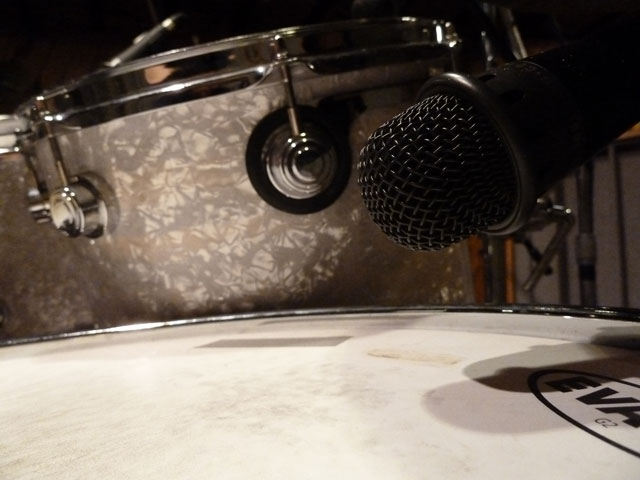Take Your Drum Loops to the Next Level by Replacing Drum Sounds
One of the best ways to add some color and originality to your existing drum loops is to get inside the groove and replace the drum sounds. While we offer many great and diverse sounds in our drum loops, some of us are on an eternal quest for new tones and flavors. If that describes you as well, read on for a simple but powerful technique to breathe fresh life into your drum loops.
Any drum or percussion loop is a prime candidate for sound replacement and it’s a worthwhile endeavor if you’re looking to upgrade or completely alter the original loop’s sounds. The best part is you’ll still have the feel and timing of a drum loop played by a real drummer (you know, those human beings who hit things for a living, only to remain the butt of jokes – ah, I digress!) while you now have some fresh, custom sounds that will work best for your music.
Divide and Conquer (the Drums)
First, you must decide how you want to isolate the drums you want to replace in the loop. One approach could be to manually (as in, hit by hit), select the hits to be replacement and striping out the sound in-between. This will work well if you only need to replace a handful of loops, but can quickly become overwhelming if you’re dealing with greater quantities. In this case, using a gate to isolate the main hits you want replaced will work great. This is especially a preferred method if the drum grooves are busy and complex. The gate will also help you exclude the background noise as well (usually not an issue with professional loops, but certainly a situation you’ll run into with crate-digging type samples).
With the drum hits in the loops isolated, you will have to employ a drum replacement plugin. With many viable options (both paid and free), find the replacement software that will work best for you. Drumagog, Slate Trigger, SPL drum xchanger, Toontrack Drum Tracker, and apTrigga are among the many popular choices. Depending on your DAW, you might already have this functionality without the need of a third-party plugin (as is usually the case, check the manual). We’ve worked with all of the drum replacement plugins mentioned and have gravitated towards the Slate Trigger app – it’s very accurate on transient detection, intuitive to use, and easy to select the sounds you want for replacement. We have no relationship with Slate, so we’re not pimping his stuff – you need to decide which software is best for your needs (and wallet).
Don’t Ever Get Too Comfortable – You Can Be Replaced
With the loops now ready for sound replacement, it’s time to decide which sounds you now want in your loops. The cheapest option (as well as being the most original) is to use your own drum samples if you have them. Maybe you sampled a kit from a previous session and love the sounds. Or, maybe you can call that old drummer friend of yours and see if he/she will bring the kit over so you can record it in all its glory (one tip – always record more samples than you think you will need). You could even sample common household items that will work well for replacement. Stories abound in recording lore of using a large suitcase as a makeshift kick drum or a phone book (do these even still exist?) to simulate the smack of a snare. With a little creativity and ingenuity, a lot of what is laying around the studio or house will work well for the sound you’re after.
Another option is to use an existing collection of drum samples. As with drum replacement software, there is no shortage here for options. Google “drum samples” and you’ll likely need hours to sort through the first few results pages alone. We’ll address these options as well as the pros and cons of each in a future post, but, for now, we’re confident you’ll be able to find replacement sounds out there without much of our help. One easy way to add individual samples for selected kit voices is to browse the drum samples over at Drum Werks – great selection and value on pure, clean acoustic samples.
While the focus of this article has been drum sound replacement, it bears mentioning that you don’t need to entirely replace the drum sounds in your loops. Try blending in the new replacement sounds with the original – most drum replacement apps have a blend feature that will allows you to replace anywhere between 0-100%. Usually in the 60%-80% range is where you start getting interesting hybrid sounds and hear some clear differences. That said, adding a third, fourth, or even fifth sound might be the way you achieve the sound you’re after in the end.
Parting Words
And, that is what it is all about – getting the drum sounds you’re after. With a clear musical vision, a modest bit of know-how, and replacement drum samples, enhancing, replacing, and transforming the sound of your drum loops is one way you can take your drum loops to the next level.
